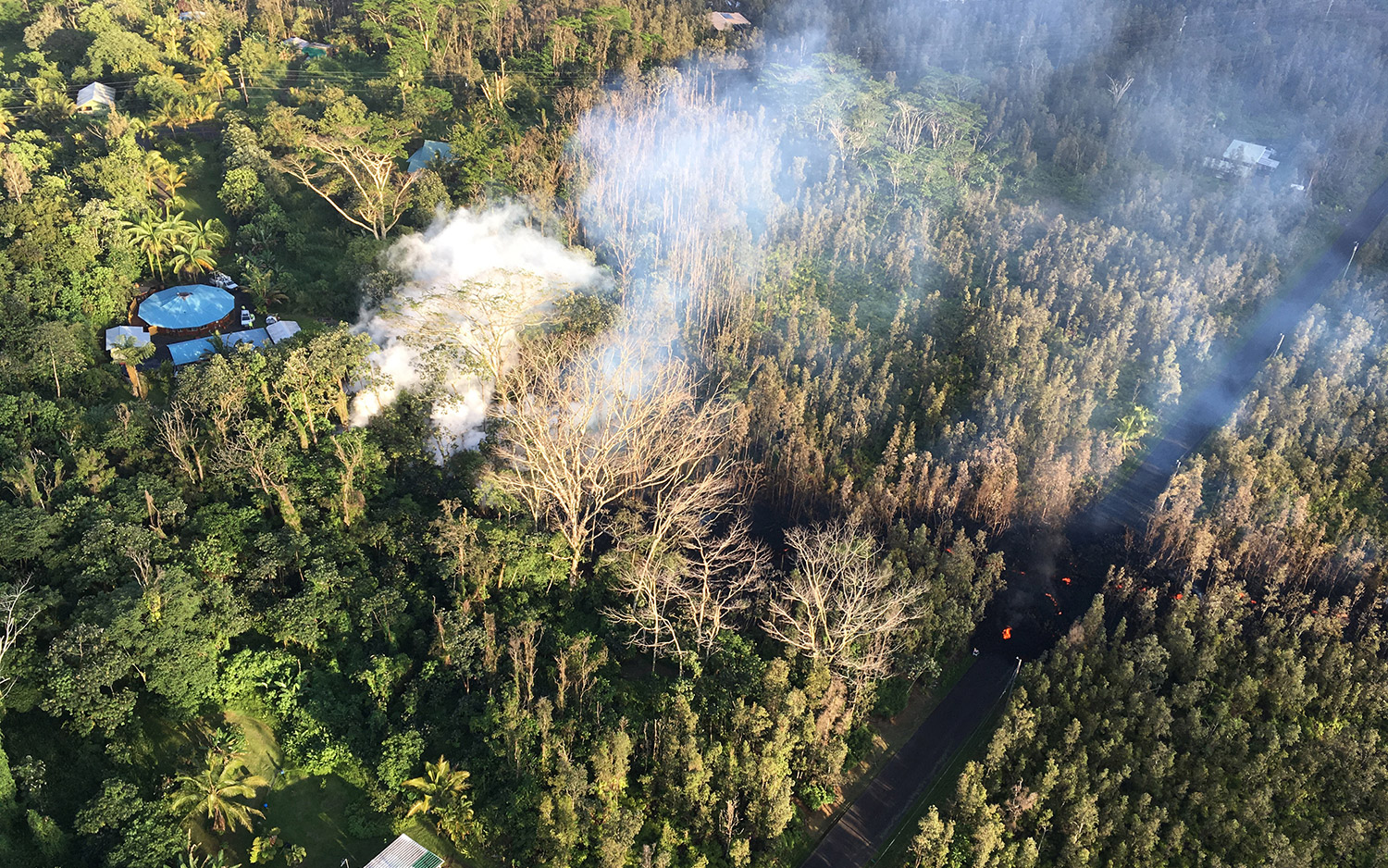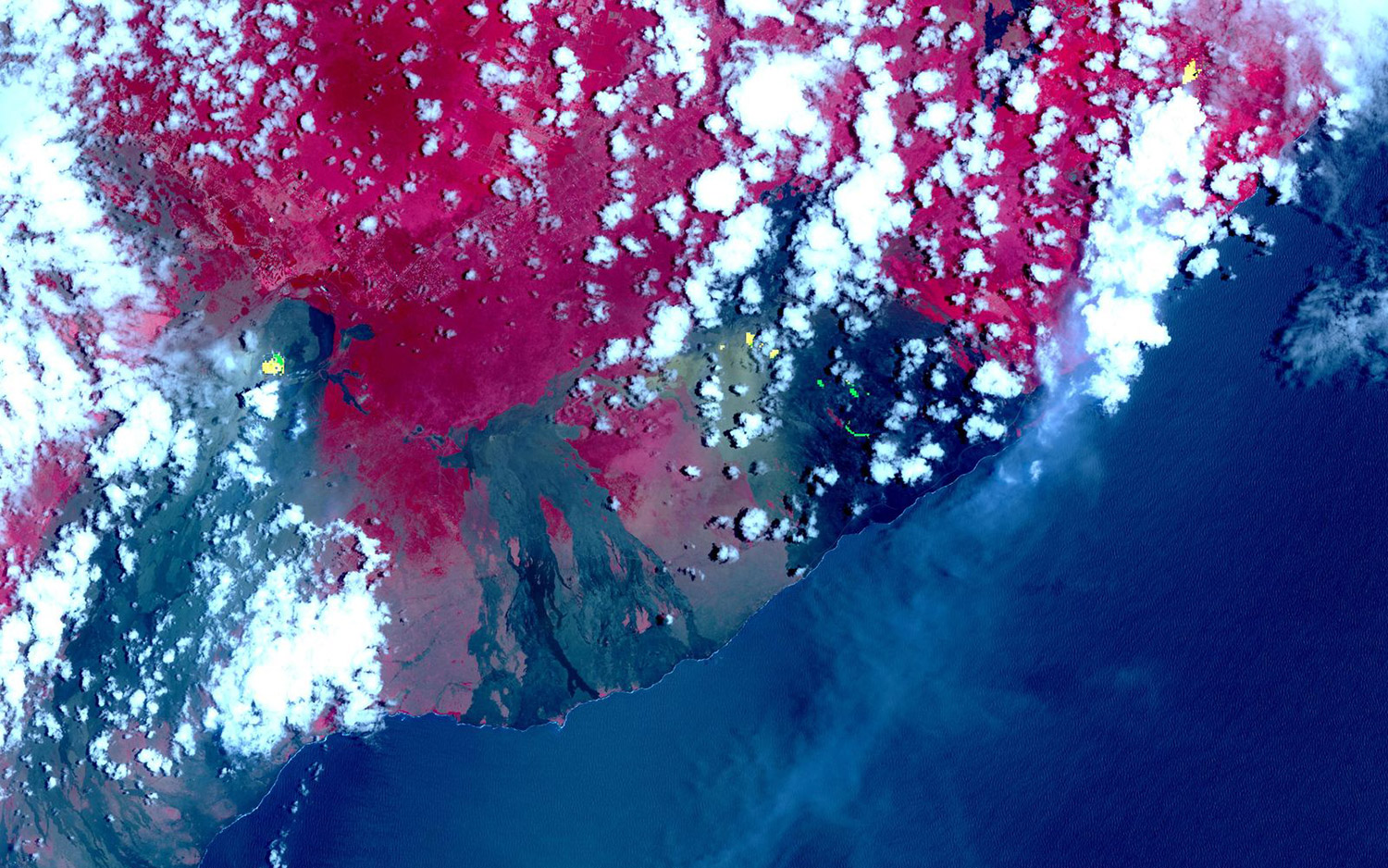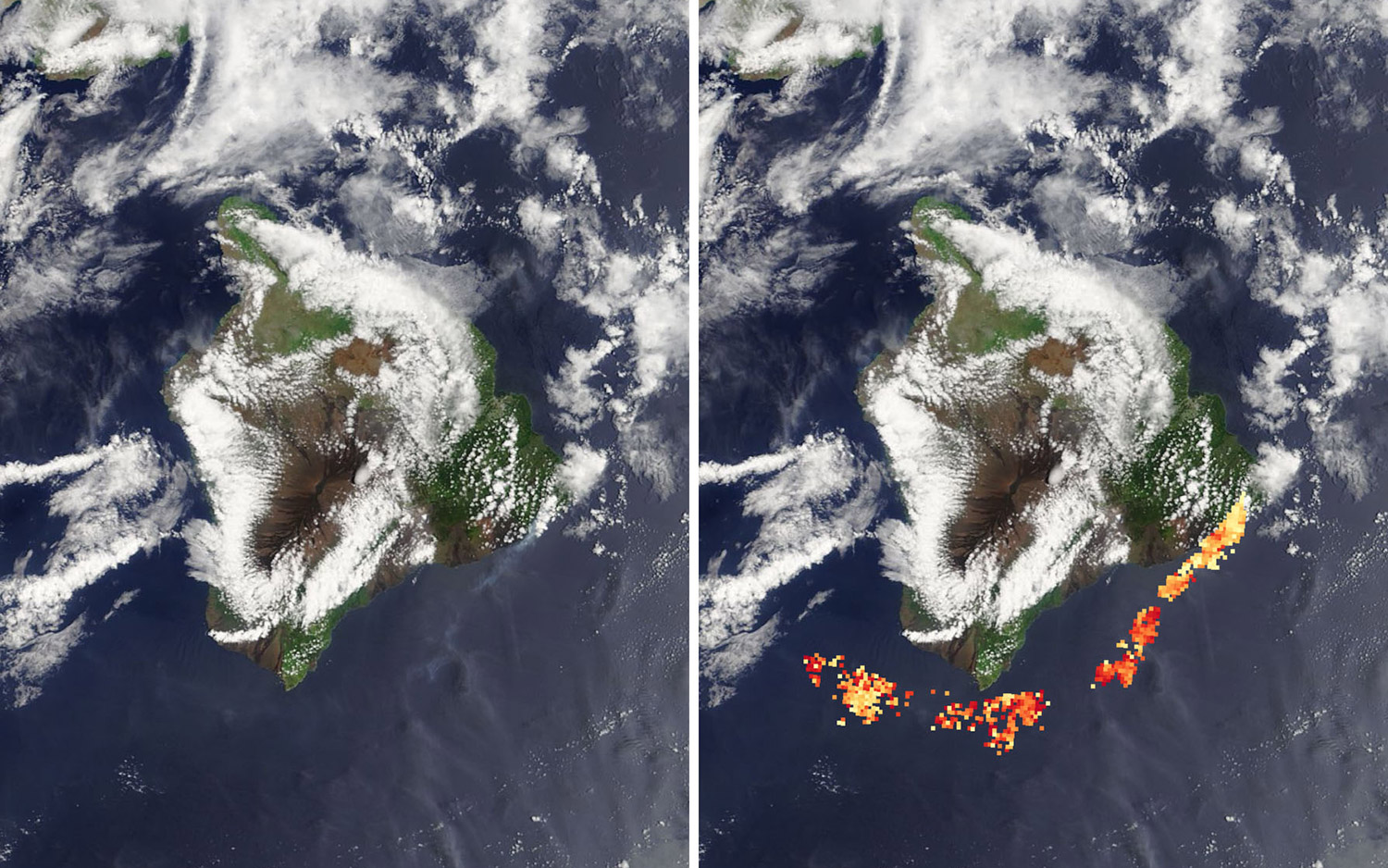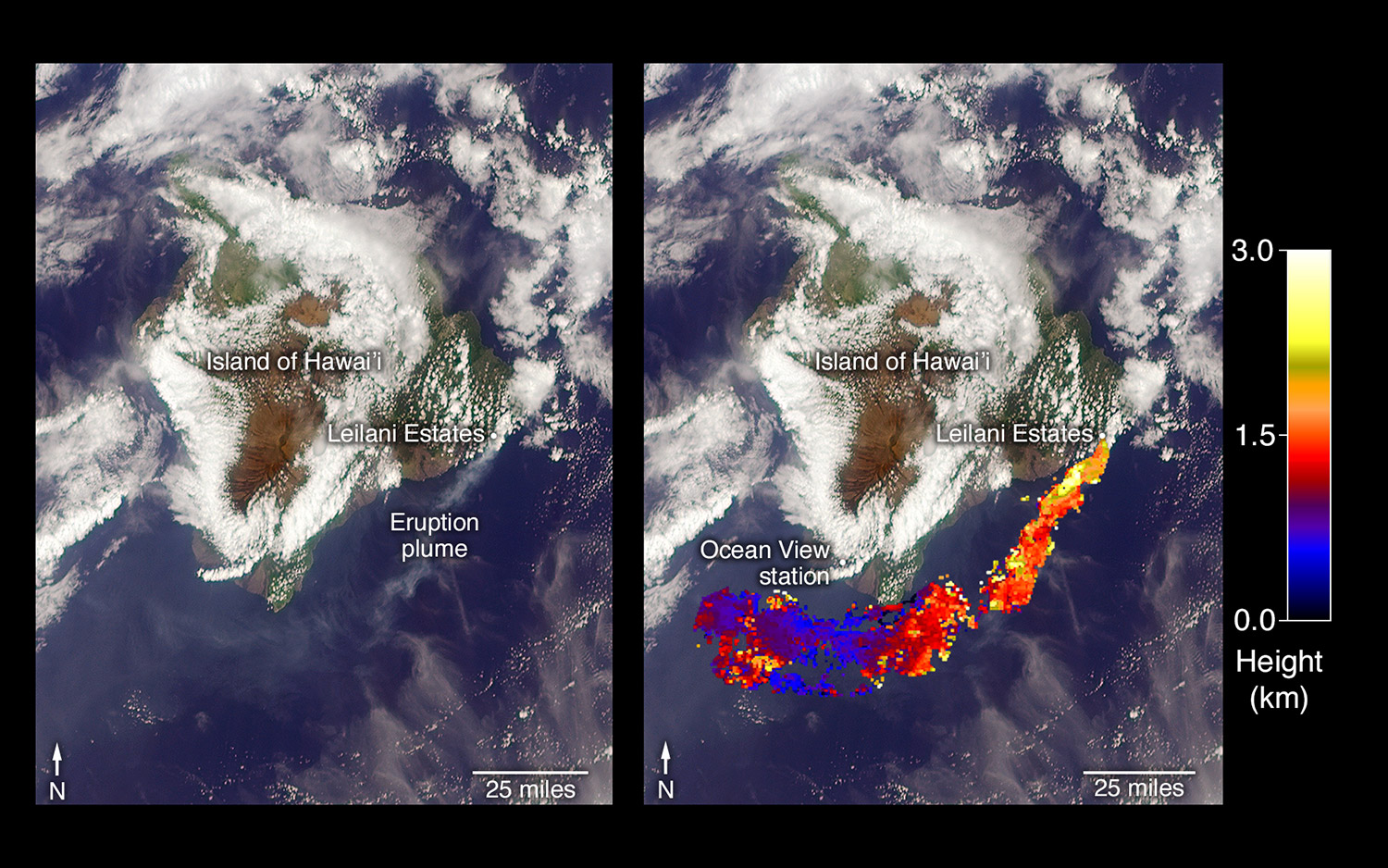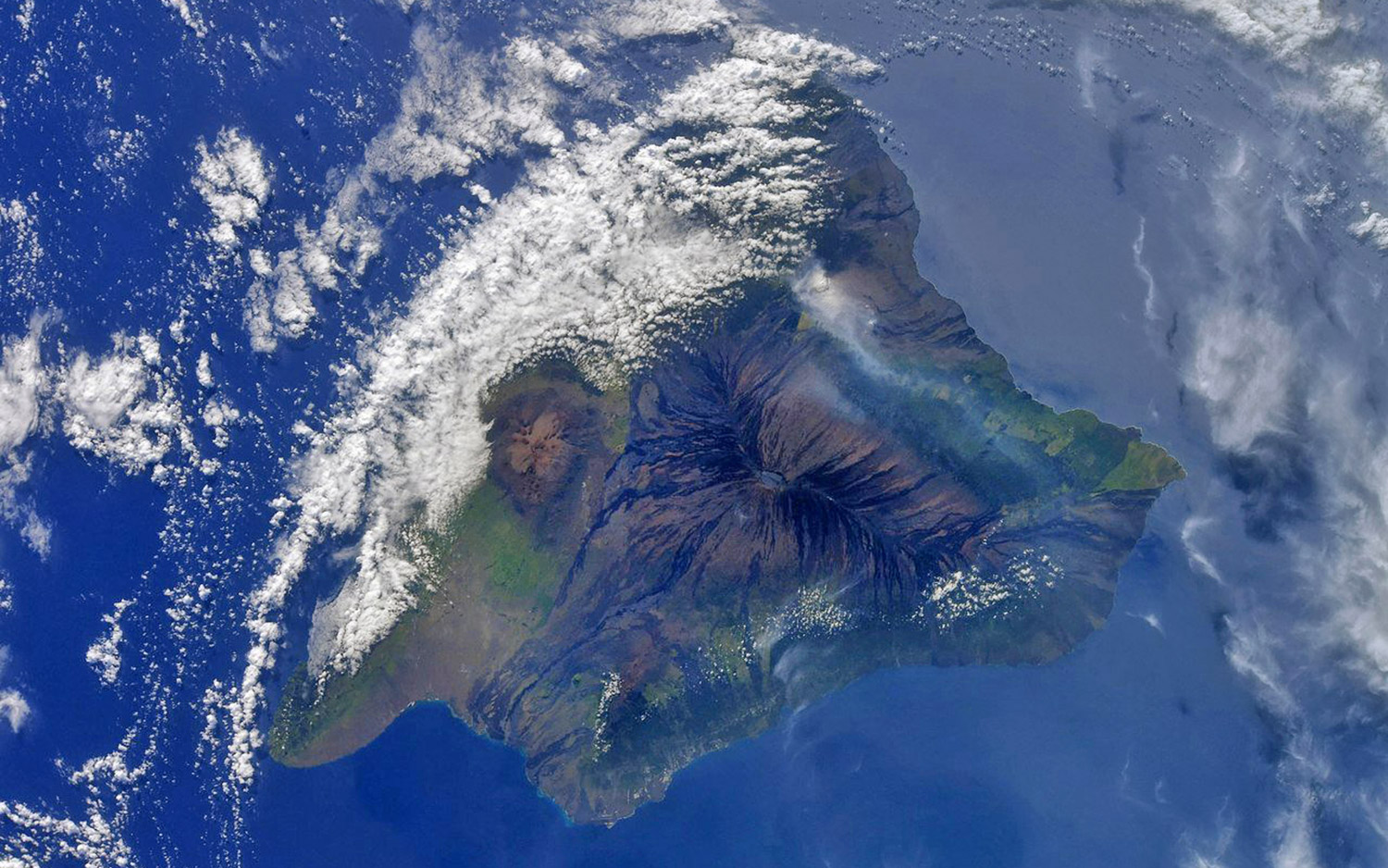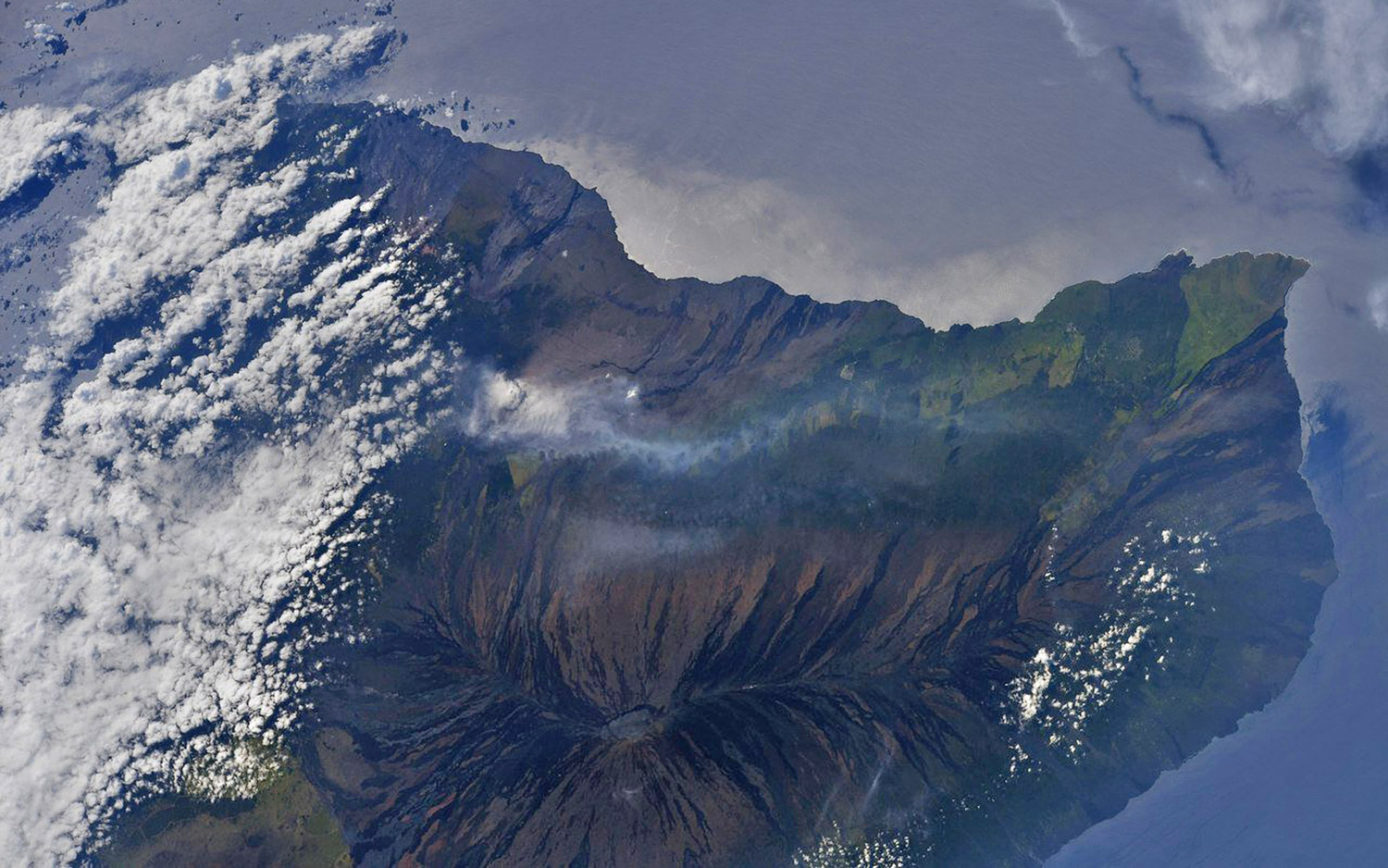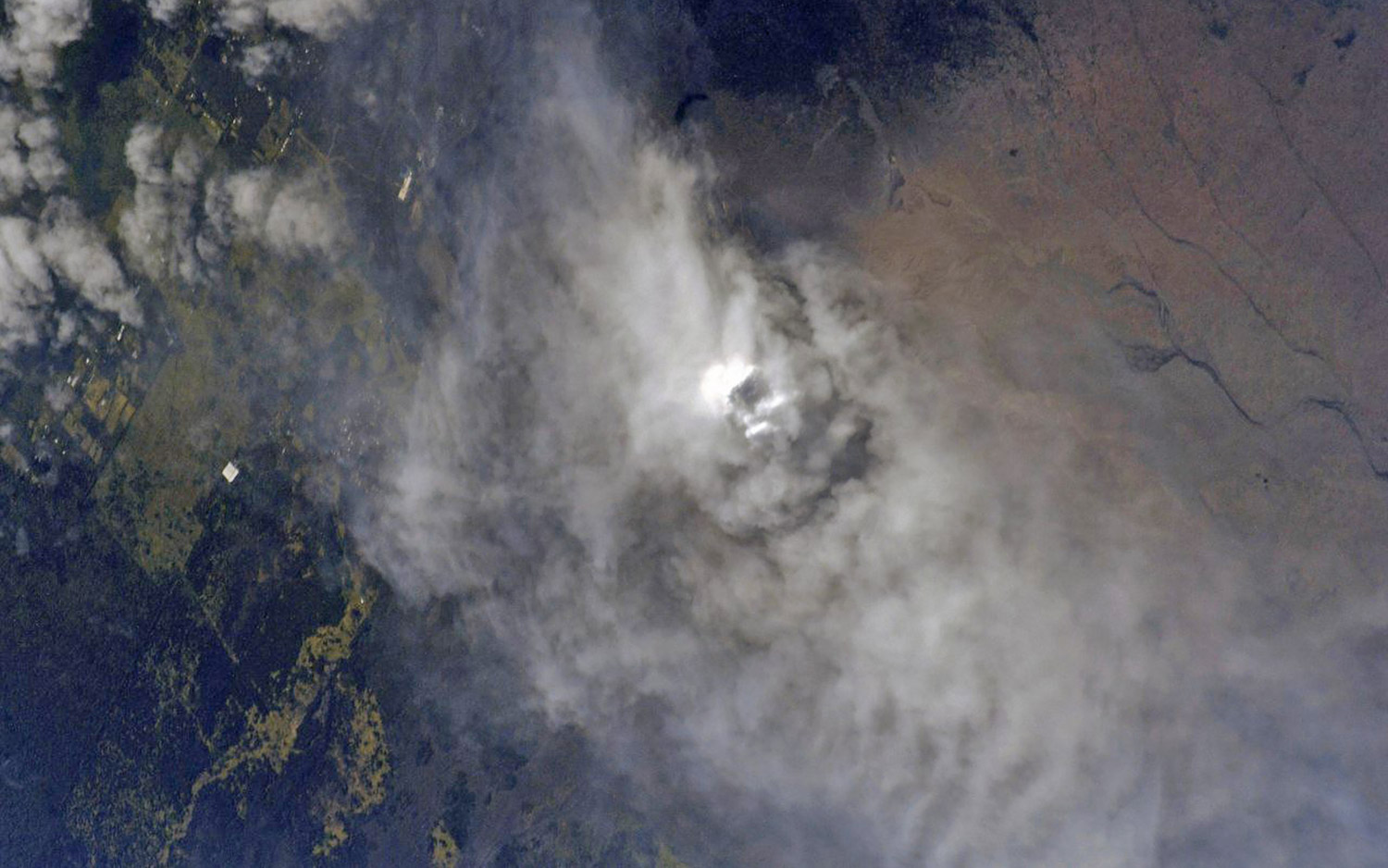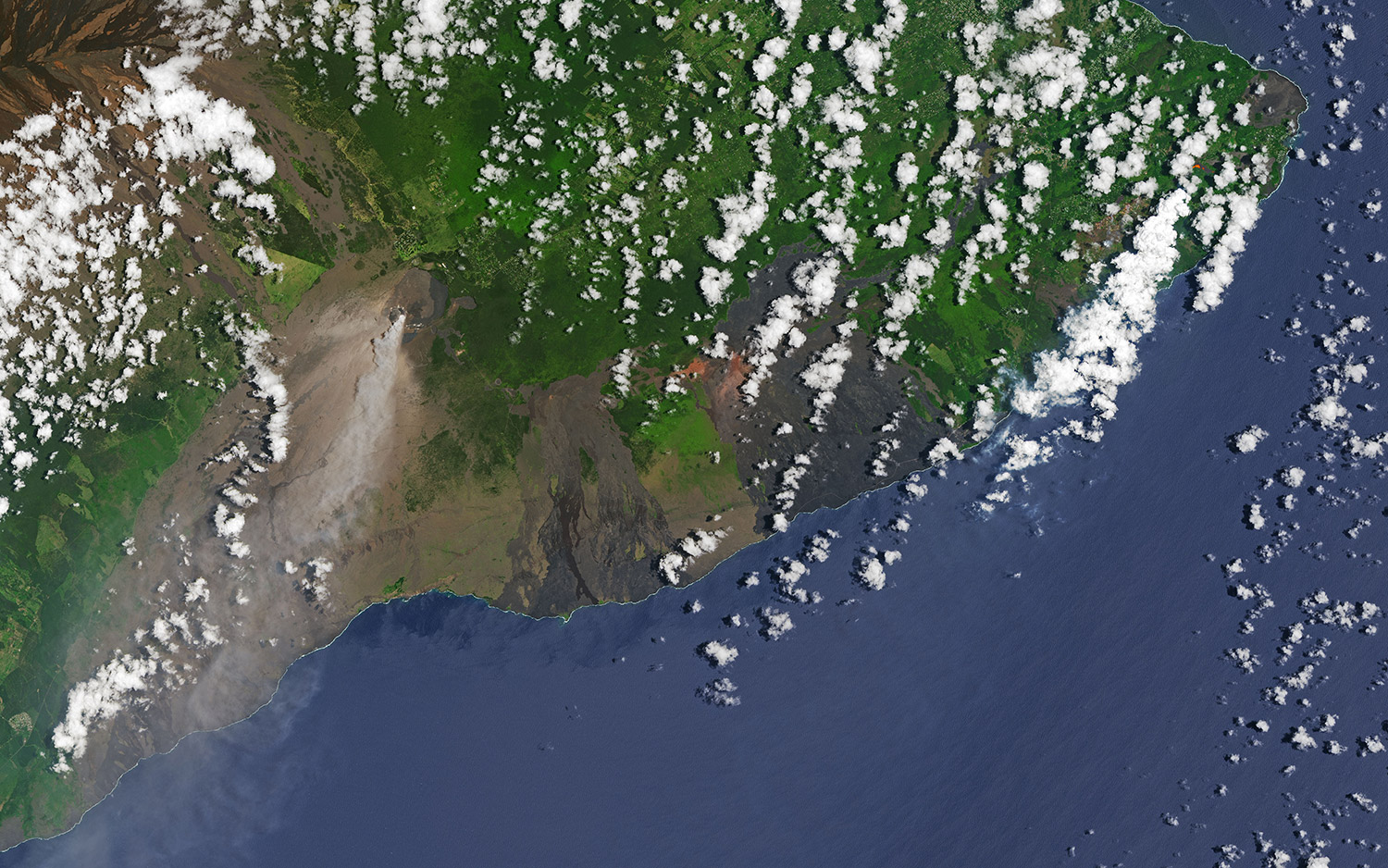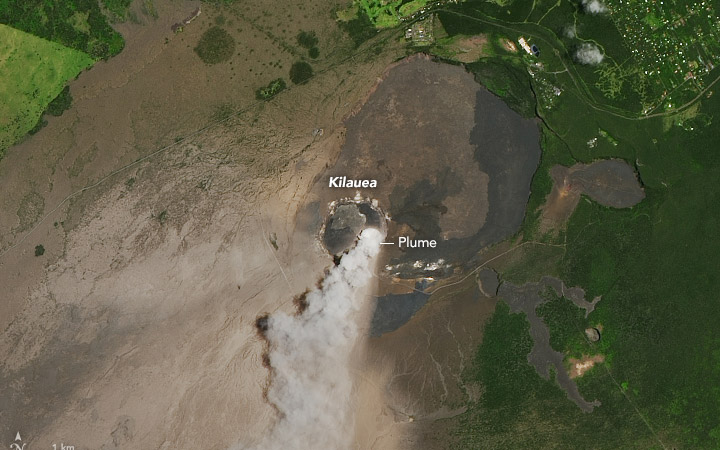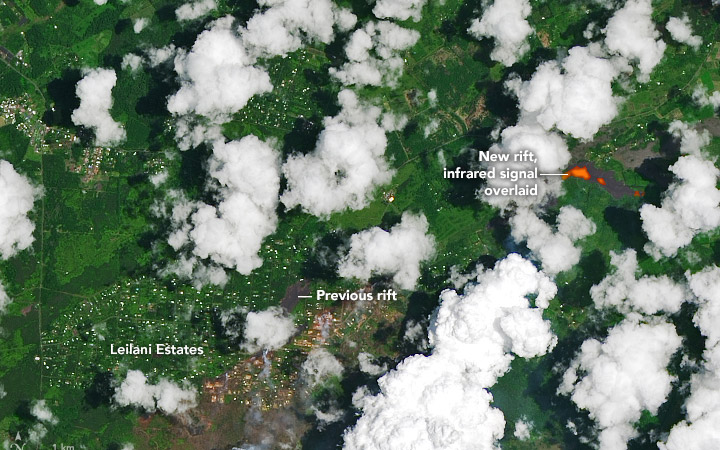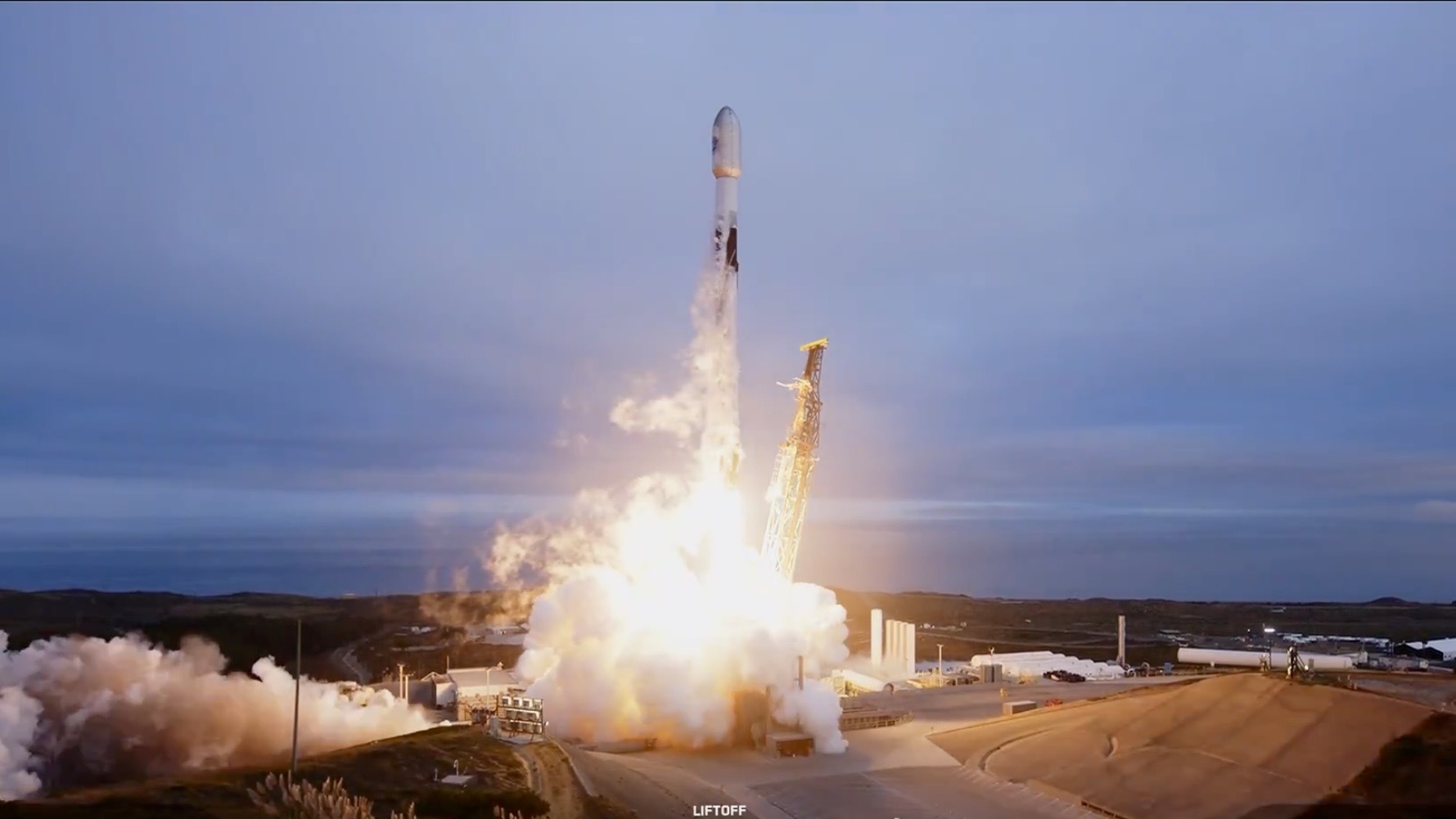In Photos: Hawaii's Kilauea Volcano Eruption as Seen from Space
View from NASA
NASA's Earth Observatory posted this view of the erupting volcano Kilauea May 3, 2018, from the Landsat 8 satellite orbiting Earth.
Infrared Hotspots
NASA's TERRA satellite took this image of the erupting Kilauea volcano in Hawaii May 6, 2018, showing hotspots on the ASTER instrument's thermal infrared bands – shown in yellow. The hotspots are newly formed fissures and lava flows, NASA officials wrote.
MISR View
This view of the erupting Kilauea volcano from the MISR instrument on NASA's Terra satellite was taken May 6, 2018. Its stereo views let researchers calculate the height of the plumes.
Plumes Rise
Ash from Kilauea Eruption Viewed by NASA's MISR instrument (height scale at right).
The View from Above
A red alert has been issued after explosions from #Hawaii's Kilauea volcano intensified. Сlouds of volcanic ash rise in the air at 3.7 thousand meters, that's why it is easy to see even from the @Space_Station .
Ash Cloud from Orbit
A red alert has been issued after explosions from #Hawaii's Kilauea volcano intensified. Сlouds of volcanic ash rise in the air at 3.7 thousand meters, that's why it is easy to see even from the @Space_Station .
Kilauea's Plume
A red alert has been issued after explosions from #Hawaii's Kilauea volcano intensified. Сlouds of volcanic ash rise in the air at 3.7 thousand meters, that's why it is easy to see even from the @Space_Station .
Breaking space news, the latest updates on rocket launches, skywatching events and more!
Eyes on Kilauea
Kilauea Continues to Erupt May 14, 2018
Looking Into Kilauea
Kilauea Continues to Erupt May 14, 2018
Tracking Kilauea
As Kilauea continued to erupt on May 14, this satellite view shows the location of towns nearby to the volcano's encroaching lava.

Sarah Lewin started writing for Space.com in June of 2015 as a Staff Writer and became Associate Editor in 2019 . Her work has been featured by Scientific American, IEEE Spectrum, Quanta Magazine, Wired, The Scientist, Science Friday and WGBH's Inside NOVA. Sarah has an MA from NYU's Science, Health and Environmental Reporting Program and an AB in mathematics from Brown University. When not writing, reading or thinking about space, Sarah enjoys musical theatre and mathematical papercraft. She is currently Assistant News Editor at Scientific American. You can follow her on Twitter @SarahExplains.
